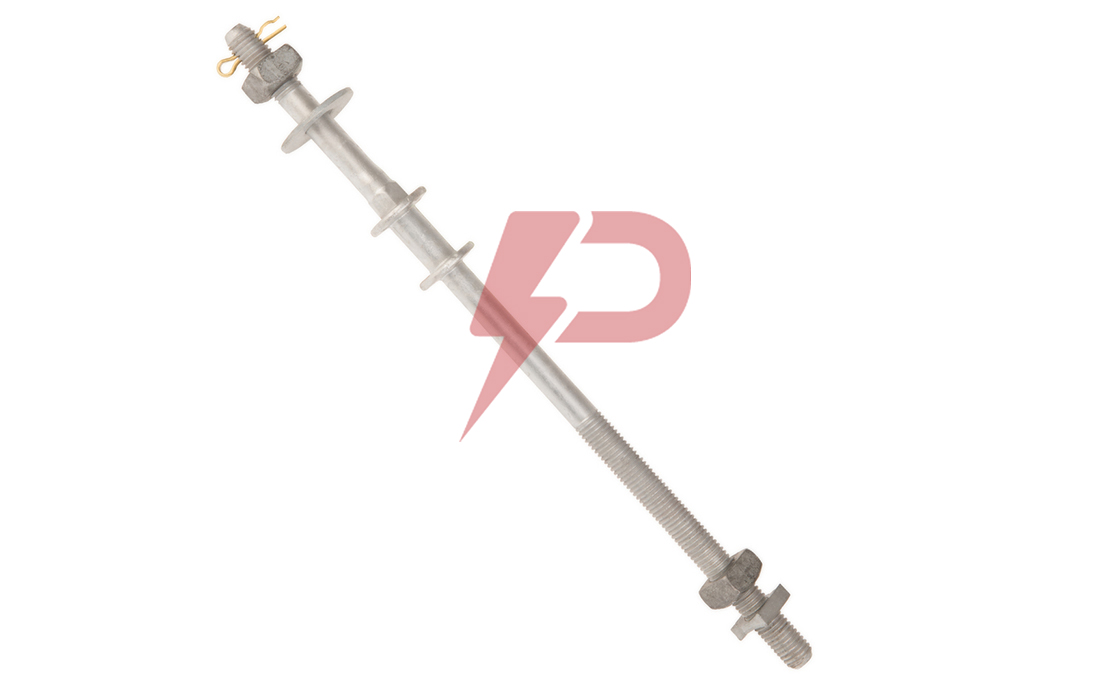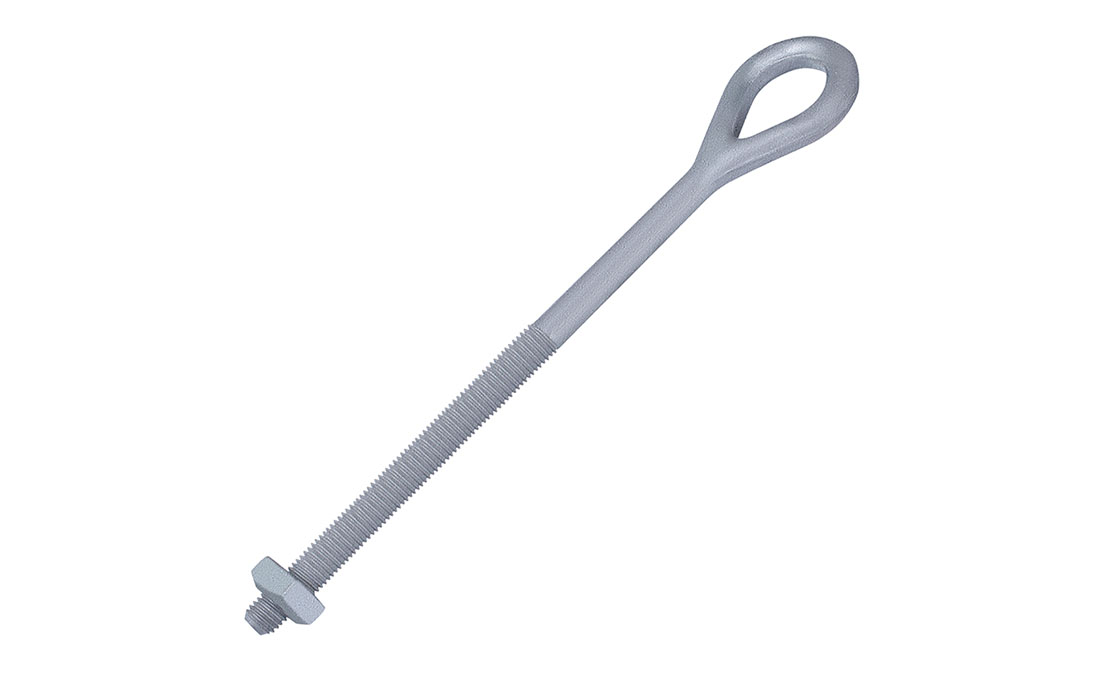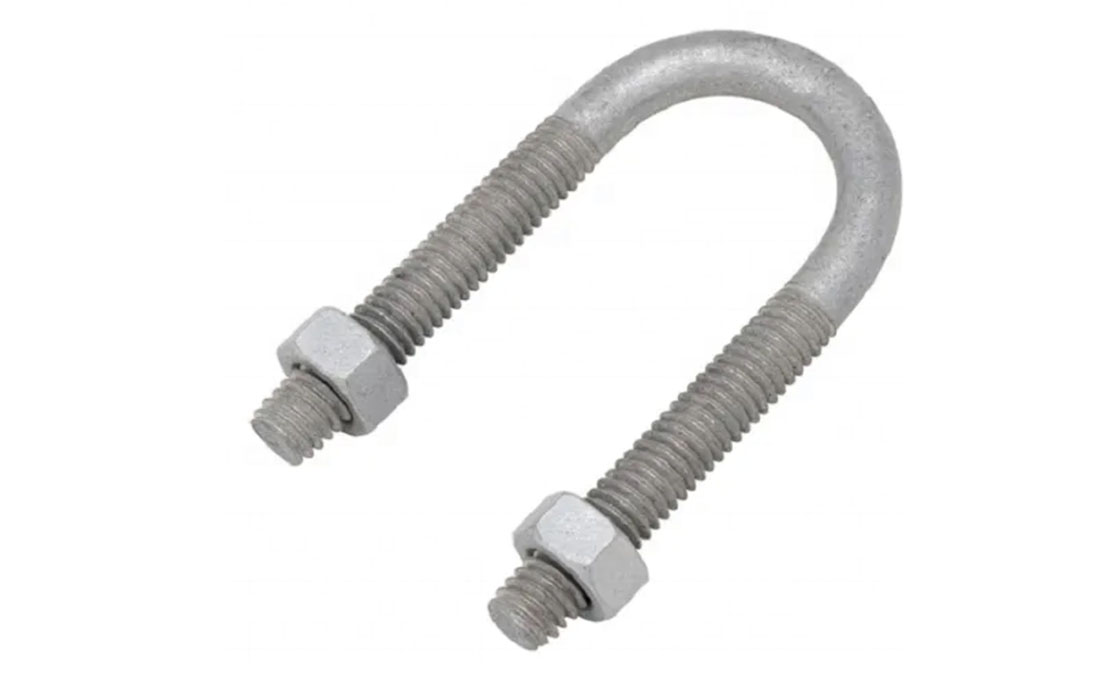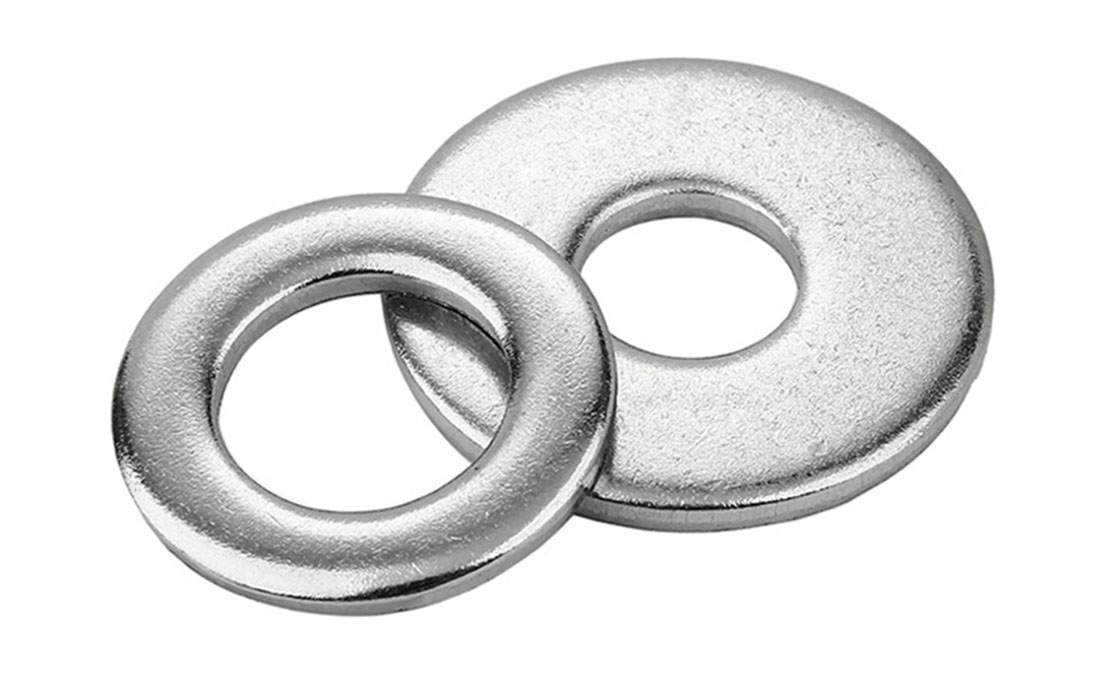Parafuso de carretel virado
Parafusos virados, também conhecido como parafusos de carretel virados ou transtornos de parafuso, são fixadores especializados projetados para isoladores de carretel na construção de linhas de energia. Esses parafusos consistem em um eixo de aço com placas forjadas na extremidade do isolador, uma seção rosqueada (normalmente 5/8″ diâmetro), e um furo na extremidade com um pino de aço para fixar o pino isolador. Os parafusos chateados vêm em dois tipos: virado único com placas forjadas de um lado, e duplo relevo com placas forjadas em ambos os lados.
Parafusos virados são instalados na lateral dos postes para suportar condutores neutros e fios de alimentação. A instalação envolve fazer furos no poste, inserindo o parafuso virado através de um isolador de carretel, e fixando-o com arruelas e porcas. A placa forjada evita que o pino isolador se mova para baixo, enquanto o pino de aço no furo impede que o pino do isolador saia. Eles funcionam em conjunto com isoladores de carretel, fios de cara, e outros componentes de hardware de linha de poste.
Principais recursos:
• Revestimento galvanizado por imersão a quente em conformidade com os padrões ASTM A-153
• Placas forjadas para resistência superior em comparação com construção soldada
• Diâmetro de rosca de 5/8 pol. com comprimento de rosca de 6 pol.
• Disponível em vários comprimentos de haste de 12 para 14 polegadas
• Sistema de retenção integral para proteger os pinos isolantes
• Resistência à tração mínima de 13,550 libras

Desenho de parafuso de carretel virado
| Estoque Não. | Polegada de diâmetro da haste | Frete aproximado WBight kg./100 unidades. | Pacote Padrão. Quantidade/Caixa | ||
| eu | UM | B | |||
| SUB0110-08 | 8 | 12-1/2 | 4 | 63.00 | 35 |
| SUB0110-09 | 9 | 13-1/3 | 4 | 68.00 | 30 |
| SUB0110-10 | 10 | 14-1/2 | 4 | 60.00 | 30 |
| SUB0110-12 | 12 | 16-1/2 | 6 | 80.00 | 30 |
| SUB0110-14 | 14 | 18-1/2 | 6 | 90.00 | 35 |
| DUB0111-08 | 8 | 14 | 4 | 73.00 | 30 |
| DUB0111-09 | 9 | 15 | 4 | 77.00 | 30 |
| DUB0111-10 | 10 | 16 | 4 | 65.00 | 35 |
| DUB0111-12 | 12 | 18 | 6 | 72.00 | 35 |
| DUB0111-14 | 14 | 20 | 6 | 80.00 | 35 |
Perguntas frequentes (Perguntas frequentes)

O que é um parafuso virado?
Um Upset Bolt é um fixador especializado projetado para isoladores de carretel, montado em um lado de um poste para suportar condutores neutros ou fios de energia. Possui placas forjadas na extremidade do isolador para evitar que o pino do isolador se mova para baixo, fixando-o efetivamente no lugar para isolar condutores e fios de serviço secundários.
Quais são os tipos de parafusos virados?
Existem dois tipos principais de parafusos virados: chateação simples e chateação dupla. A diferença está no número de placas forjadas na extremidade do isolador. Parafusos simples têm menos placas forjadas em um lado, enquanto os parafusos duplos têm mais placas forjadas em ambos os lados do parafuso.
Quais são as principais características de um Upset Bolt?
Os parafusos chateados normalmente têm 5/8″ diâmetro da rosca, um furo na extremidade com um pino de aço para fixar o pino isolador, e são galvanizados a quente de acordo com os padrões ASTM A-153. Eles geralmente vêm com uma arruela redonda, nozes quadradas, e uma cupilha para instalação segura.
Como os Upset Bolts são instalados?
A instalação envolve fazer furos na lateral do poste, posicionando o parafuso através dos furos, e fixando-o com arruelas e porcas. O processo requer alinhamento cuidadoso e aperto adequado para garantir estabilidade mecânica e condutividade elétrica quando usado em sistemas de aterramento.
Quais são as principais aplicações dos Upset Bolts?
Os Upset Bolts são usados principalmente em instalações de postes, suportando fios de serviço secundários e condutores neutros. Eles são essenciais em sistemas de distribuição de energia, infraestrutura de comunicação, e instalações de antenas onde são necessários ancoragem segura e isolamento elétrico.
De quais materiais os Upset Bolts são feitos?
Os parafusos virados são normalmente fabricados em aço estrutural de alta resistência. Eles geralmente apresentam um revestimento especial de pintura asfáltica ou galvanização por imersão a quente para proteção contra corrosão., tornando-os adequados para uso externo de longo prazo em diversas condições ambientais.
Quais tamanhos estão disponíveis para parafusos virados?
Os parafusos chateados vêm em vários tamanhos, com diâmetros de rosca comuns de 5/8″. Os comprimentos podem variar de 6 polegadas para mais 14 polegadas, dependendo da aplicação específica. O tamanho é frequentemente especificado como diâmetro por comprimento, como “5/8″ x 14″”.
Como você seleciona o parafuso virado certo?
A seleção depende de fatores como o deslocamento necessário do pólo, requisitos de carga, e condições ambientais. Considere a resistência à tração do parafuso, comprimento do fio, e dimensões gerais. Por exemplo, parafusos virados duplos fornecem 1-5/8″ deslocado do pólo.











